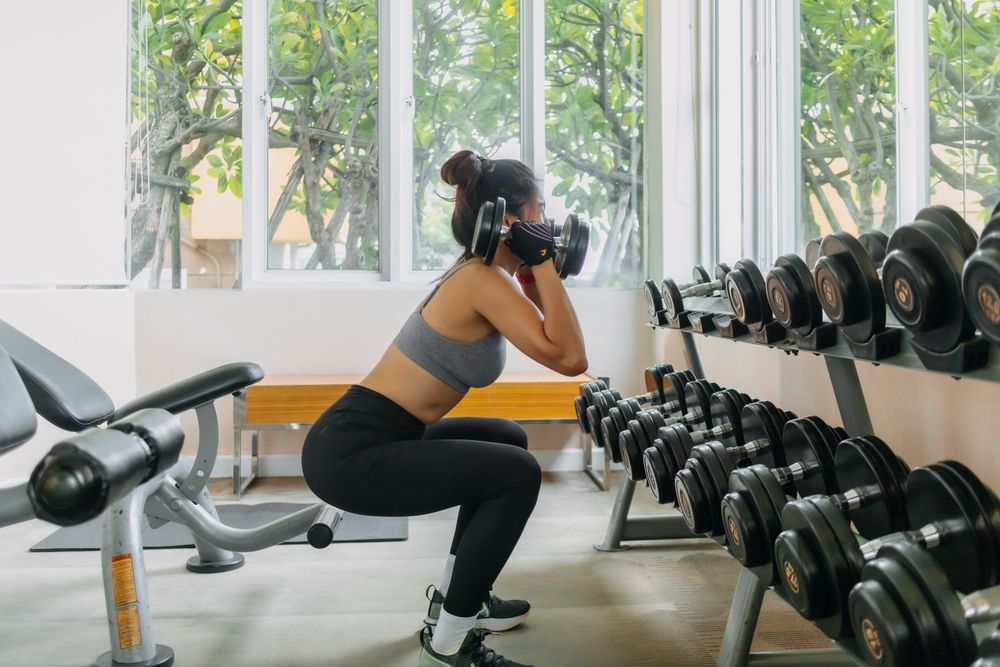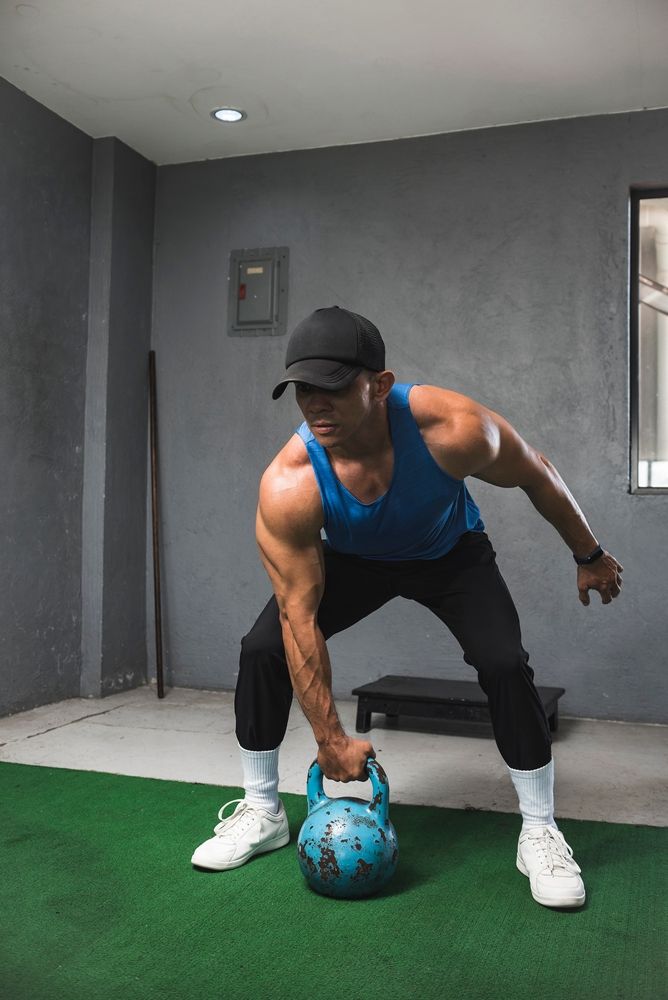
If you randomly ask people at your gym about their fitness goals, I would bet that almost 90% of them would say they want to lose weight. It’s undeniably the top reason people hit the gym, sign up for personal training, invest in fancy fitness gadgets, and more. However, with countless weight loss methods out there, many promise quick results, but often, these claims are exaggerated. Enter compound exercises—a reliable method that engages multiple muscle groups simultaneously and is a key to effective weight loss.
My best advice is to stick with proven approaches that have helped many people lose weight and transform their physiques over the years. This ensures that you're making changes to your body in a safe and sustainable manner. One of the most effective methods is strength training, particularly focusing on compound exercises.
In this article, we'll explain compound exercises, why they're beneficial, how to use them, and provide some helpful examples so you can get started ASAP and get awesome results.
What are compound exercises?
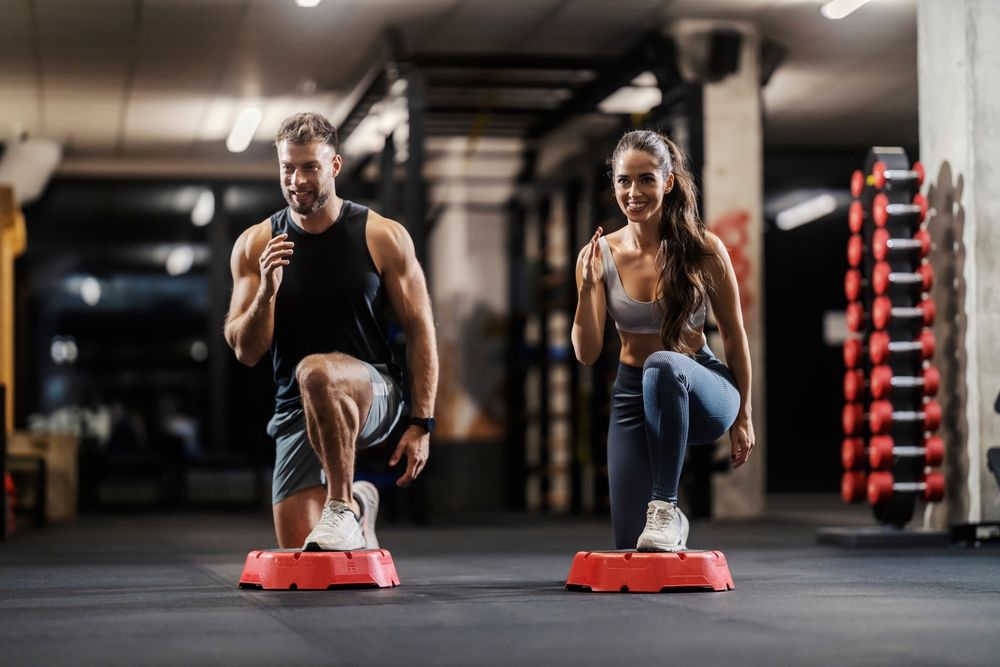
A compound exercise involves moving multiple joints simultaneously, rather than just one. For instance, in a bicep curl, the only joint that moves is the elbow, while other joints, like the shoulders and wrists, remain relatively still. In contrast, a row involves movement at the elbow, shoulder joint, shoulder blade, and potentially more, depending on how you perform the exercise. This is what makes it a compound exercise.
Typically, compound exercises are performed using free weights such as dumbbells, barbells, suspension trainers, kettlebells, cable machines, or even just your body weight. Some common examples include pushups, squats, pull-ups, lunges, and more, all of which involve multiple joints moving through a range of motion.
How can compound exercises help you lose weight?
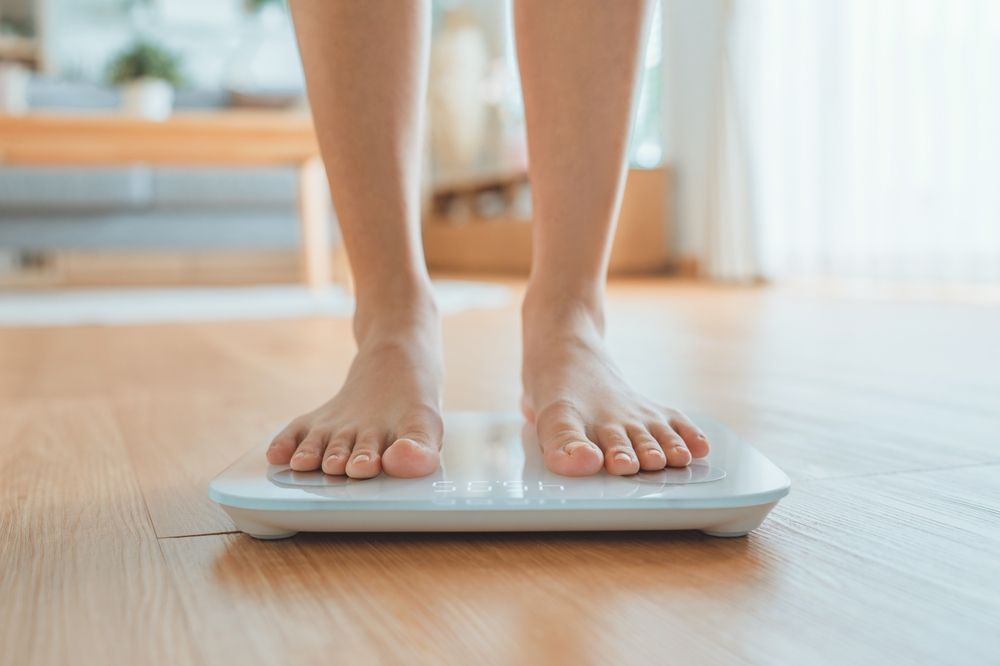
The more muscles you engage with each repetition, the greater the stimulus on your body. Additionally, these exercises generally place a higher demand on your cardiovascular system because they involve more movement than single-joint exercises. As a result, you can burn significantly more calories, which is extremely beneficial for weight loss. The more calories you burn, the more weight you can lose.
Moreover, compound exercises help you build more muscle mass. The more muscle you have, the higher your metabolism, leading to more calories burned even at rest. On top of that, performing compound exercises can boost your metabolism immediately after your workout for a period of time.
When you consider all these benefits, it's clear how compound exercises can have a significant impact on your body, helping you lose weight more effectively than other forms of strength training.
How often should you perform compound exercises for weight loss?
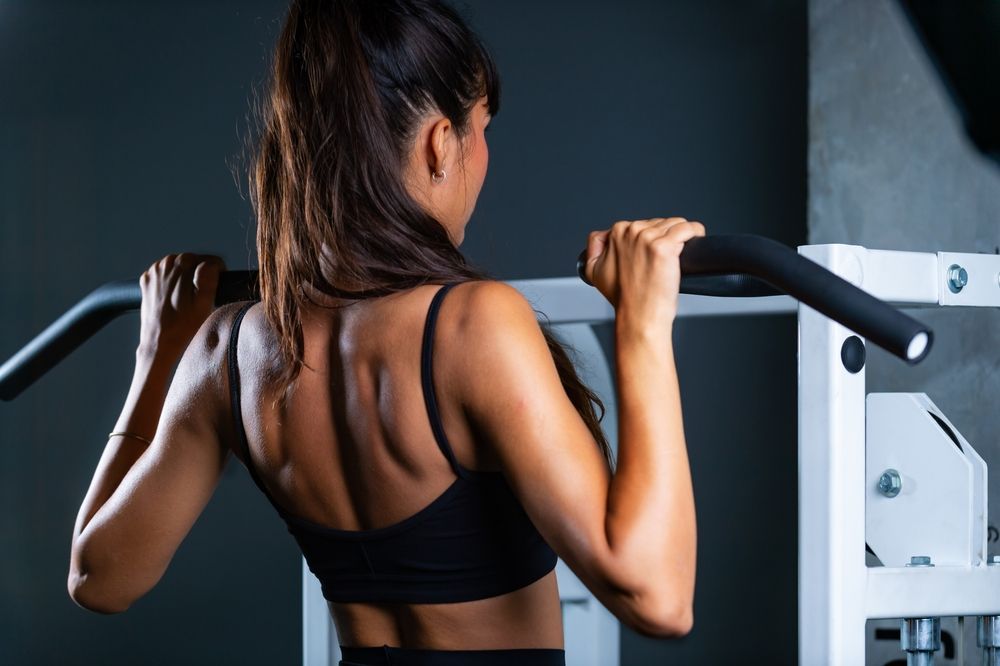
If you're aiming to lose weight, you should incorporate strength training with compound exercises two to three times a week, dedicating about an hour to each workout. Why this frequency? Doing it only once a week makes it challenging to see consistent progress, both in the gym and on the scale. However, with two or three sessions per week, you can achieve faster and more steady improvements over time. Four sessions a week can be excessive unless you're very experienced.
It's important to note that your training sessions should be challenging. Many people don't push themselves hard enough at the gym. If you have time to text your friends or check Instagram during your workout, you're not working out hard enough. The weights should be challenging, and your rest periods should be just long enough to catch your breath before starting another set.
Sample Compound Exercise Workout for Weight Loss
Here's a workout that suits individuals of all experience levels, as it's self-regulating. This means it will adapt to your abilities: beginners can start with very light resistance, while experienced individuals can use heavier weights or push themselves harder.
For the "A" circuit, set a timer for 10 minutes and alternate between the two exercises, completing as many sets as possible with minimal rest.
A1) Goblet Squat — 4 reps
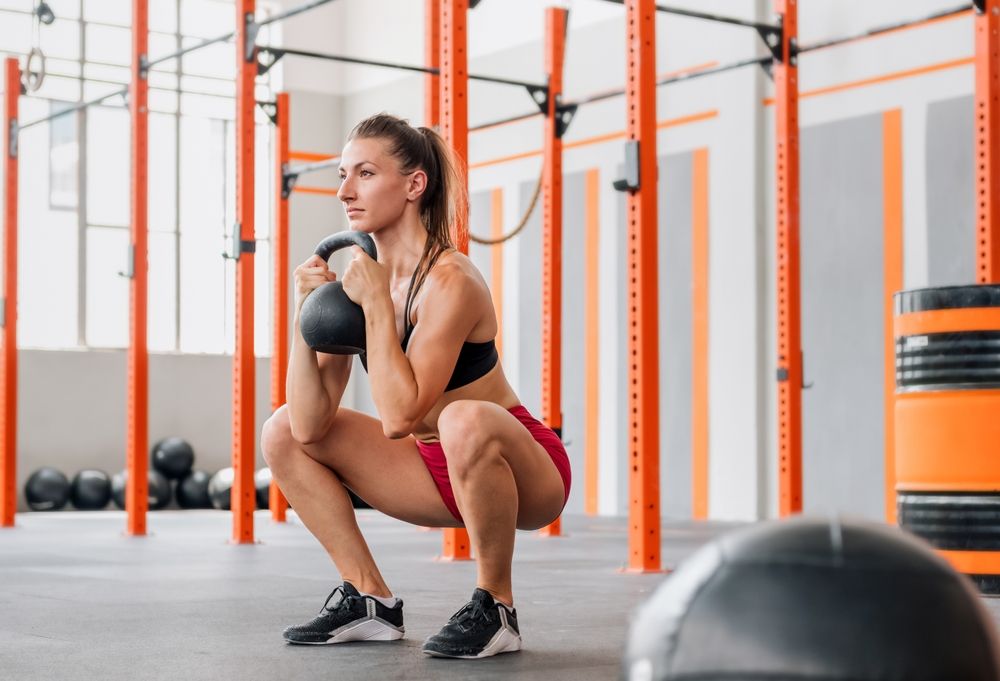
Hold one end of a dumbbell with both hands and position it close to your chest, keeping your elbows tucked underneath. Stand with your feet shoulder-width apart, and point your toes slightly outward. Initiate the movement by pushing your hips back and spreading your knees apart. Lower yourself until your hips are below your knees while maintaining a flat lower back. At the bottom of the movement, push through your heels and keep your knees apart as you return to the starting position.
A2) Inverted Row — 4 reps
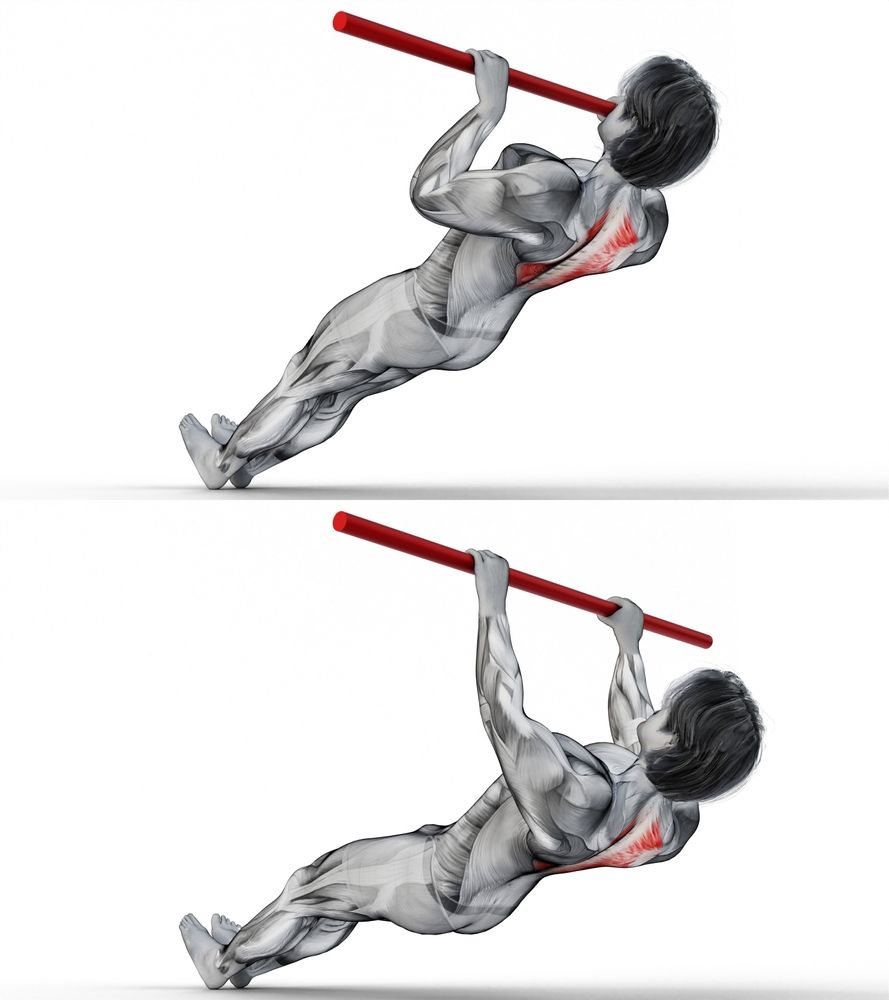
Position a barbell on a power rack or Smith Machine at a height where you can reach it while lying underneath. Grab the bar with an overhand grip and pull yourself up, aiming to touch your chest to the bar. Squeeze your shoulder blades together and keep your body straight, maintaining a plank-like position.
B1) Hip-Thigh Extension Sets: 5, Reps: 12 each leg, Rest: 30 seconds
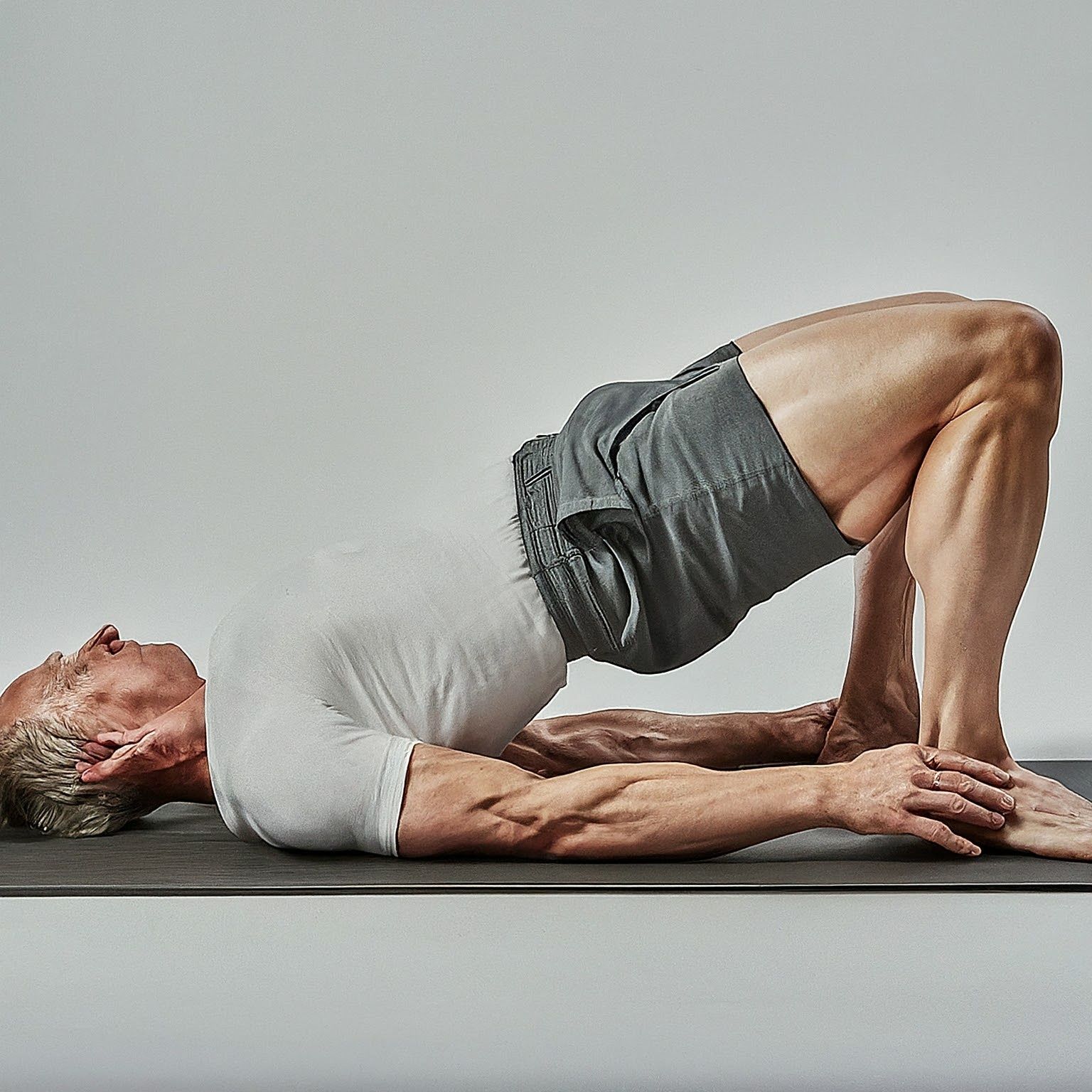
Lie on the ground with your knees bent and feet flat on the floor. Extend one leg straight out and hold it there. Drive through your heel and squeeze your glutes to push your hips up. Repeat. Do not use your lower back you pull yourself up.
B2) Dumbbell Bench Press, Sets: 5, Reps: 5, Rest: 30s
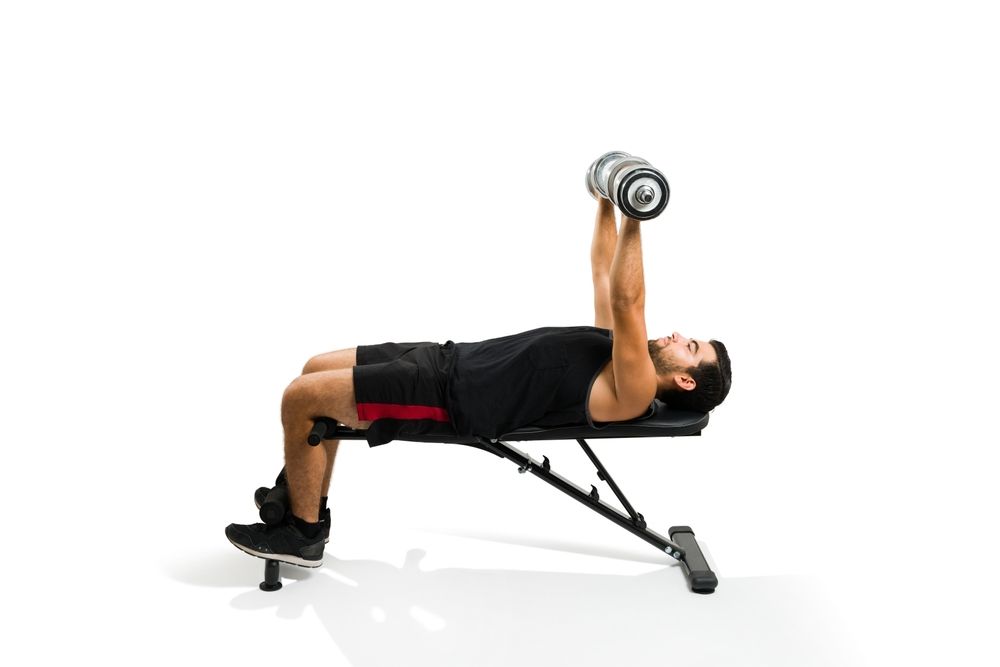
Lie on a bench with your chest up, shoulders squeezed together, and feet flat on the ground. Drive the dumbbells upward, keeping your shoulders back. Drive through your heels as well, keeping your glutes on the bench.
B3) Lat Pulldown, Sets: 5, Reps: 5, Rest: 30s
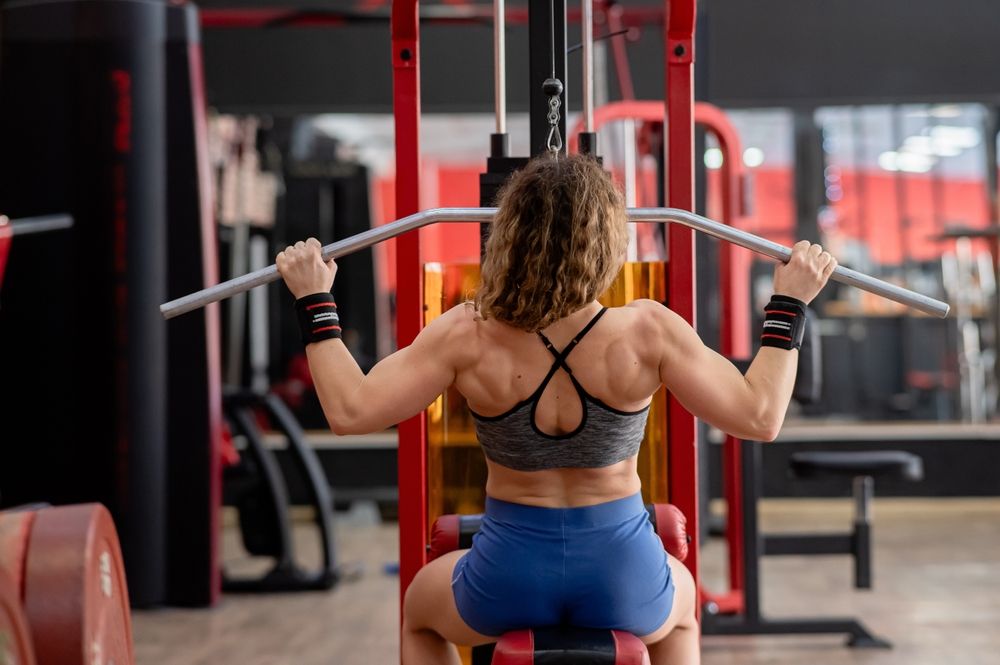
Sit at a lat pulldown machine, grab the handle about shoulder-width apart with your palms facing away. Keep your torso upright, squeeze your shoulder blades together, and pull the bar toward your collarbone. Keep your chest up as you pull.
C1) Bear Crawl, Sets: 2, Reps: 15 yards, Rest: 60s
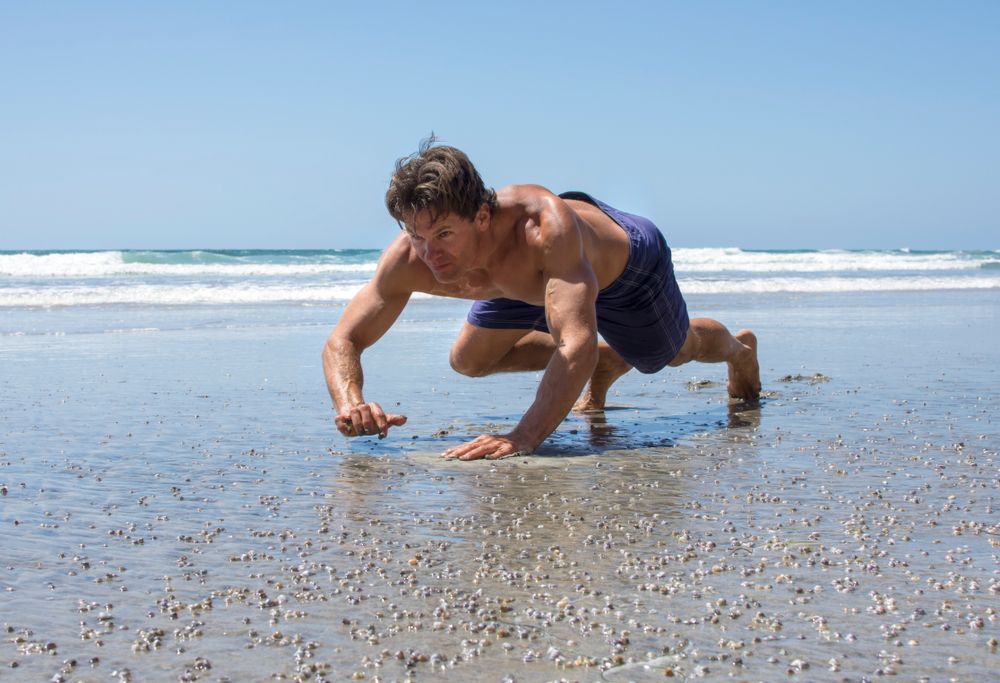
Start on all fours with your hands positioned directly under your shoulders and your knees directly under your hips, keeping your knees just an inch above the ground. Begin crawling forward by moving your right arm and left leg simultaneously, then alternate with your left arm and right leg. Maintain a low hip position and keep your head up as you move.

